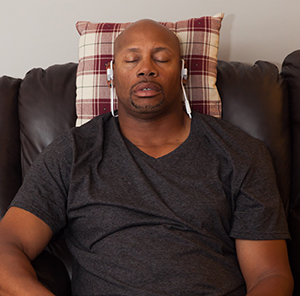Osteoarthritis: Coping with Pain
There are many ways to control your pain. You’re making a good start by learning about osteoarthritis and its treatments. Knowing more about this condition helps you work with your healthcare provider to find the best treatments for you. Keeping a positive outlook may help you manage pain from day to day. Taking time each day to relax and enjoy yourself may help you control osteoarthritis pain, instead of letting it control you. Try these methods to help you cope with, and even reduce, your pain.
Take control
Relaxing may help ease muscle aches that result from joint pain. To relax, try these methods:
-
Breathe slowly and calmly and think of a peaceful scene.
-
Meditate by focusing your mind on 1 word, object, or idea.
Getting plenty of sleep may help reduce pain and help you function better. If pain is making it hard for you to sleep, ask your healthcare provider about ways to control pain and make sure you have a good night’s sleep. Cutting back on caffeine and alcohol can help you sleep better. So can going to bed and getting up at about the same time every day.
Use distraction

Getting your mind off the pain may seem hard to do. But it may in fact help reduce pain. When you are in pain, try one of these ways of distracting yourself:
-
Watch a funny movie with a friend.
-
Listen to music you enjoy.
-
Read a novel.
-
Talk with friends or family.
-
Go to a museum, park, or other favorite attraction.
-
Arrange to do a regular activity, such as volunteer work.
Heat and cold
Using heat and cold treatments are simple ways to lessen arthritis symptoms:
-
Heat soothes stiff joints and tired muscles. Heat works well before exercise, for example. Heat treatments include:
-
A warm shower or bath, or soak (for example, fill the sink with warm water and move your fingers, hands, and wrists around in the water)
-
A moist heating pad
-
A warm, moist wash cloth
-
An electric blanket or throw
-
Cold treatments help to numb painful areas and decrease swelling. Cold treatments include the following wrapped in a thin towel:
-
An ice pack or bag of ice. To make an ice pack, put ice cubes in a plastic bag with a strong seal.
-
A reusable gel-filled cold pack
Be careful when using heat or cold. You can injure your skin. Each treatment should last for only 10 to 20 minutes. Your healthcare provider or therapist can give you specific instructions.
Acupuncture
Acupuncture is a 2,000-year-old practice. Providers put thin needles in certain parts of the body. Research shows that it can help to ease the pain of arthritis.
For more information or to find a provider near you, visit the American Academy of Medical Acupuncture's website, www.medicalacupuncture.org/ .
Massage
Therapeutic massage has many benefits. It may:
-
Help you and your muscles relax
-
Improve blood flow to muscles and joints
-
Help joints stay more flexible
Look for a certified massage therapist. Many are trained to treat sore muscles, joint pain, and stiffness.
Vitamins, supplements, and herbs
People with arthritis, or other long-term conditions that cause pain, often look for alternative ways to lessen pain. Vitamins, supplements, and herbs may or may not help you to feel better. Before you try any vitamin, supplement, or herb, make sure you ask your healthcare provider or pharmacist.
Physical therapy and occupational therapy
A physical or occupational therapist can help if you are having trouble with daily activities.
They can put together an exercise routine to help build strength and improve heart health.
Weight management
Studies have shown that weight loss in overweight people can improve osteoarthritis symptoms.
Talk with your healthcare provider about your optimal ideal weight. They can tell you about ways to manage your weight if needed.
Psychological treatments
Research shows that many psychological therapies or those that deal with thinking and emotions help people cope with arthritis pain. These therapies include:
Ask your healthcare provider for more information about these therapies.
For more information about many of these methods, visit the National Center for Complementary and Alternative Medicine's website, www.nccih.nih.gov/ .